Creative Sound Blaster X5 – Delightful Music Comes From Unexpected DAC / AMP / Sound Card
Creative Sound Blaster X5 is a $299 USD high-quality Sound Card / DAC / AMP mainly aimed at gamers and audiophiles, or rather a hybrid of the two, with a 4.4mm balanced headphone output, RCA outputs, mic input, and with a selection of other features that may come in handy to the technophile. Today we will review the X5 and also compare it to other high-quality DACs in this price range, including Shanling H5 (369 USD), iFi Audio Go Bar (329 USD), and Aune X1S GT (349 USD).
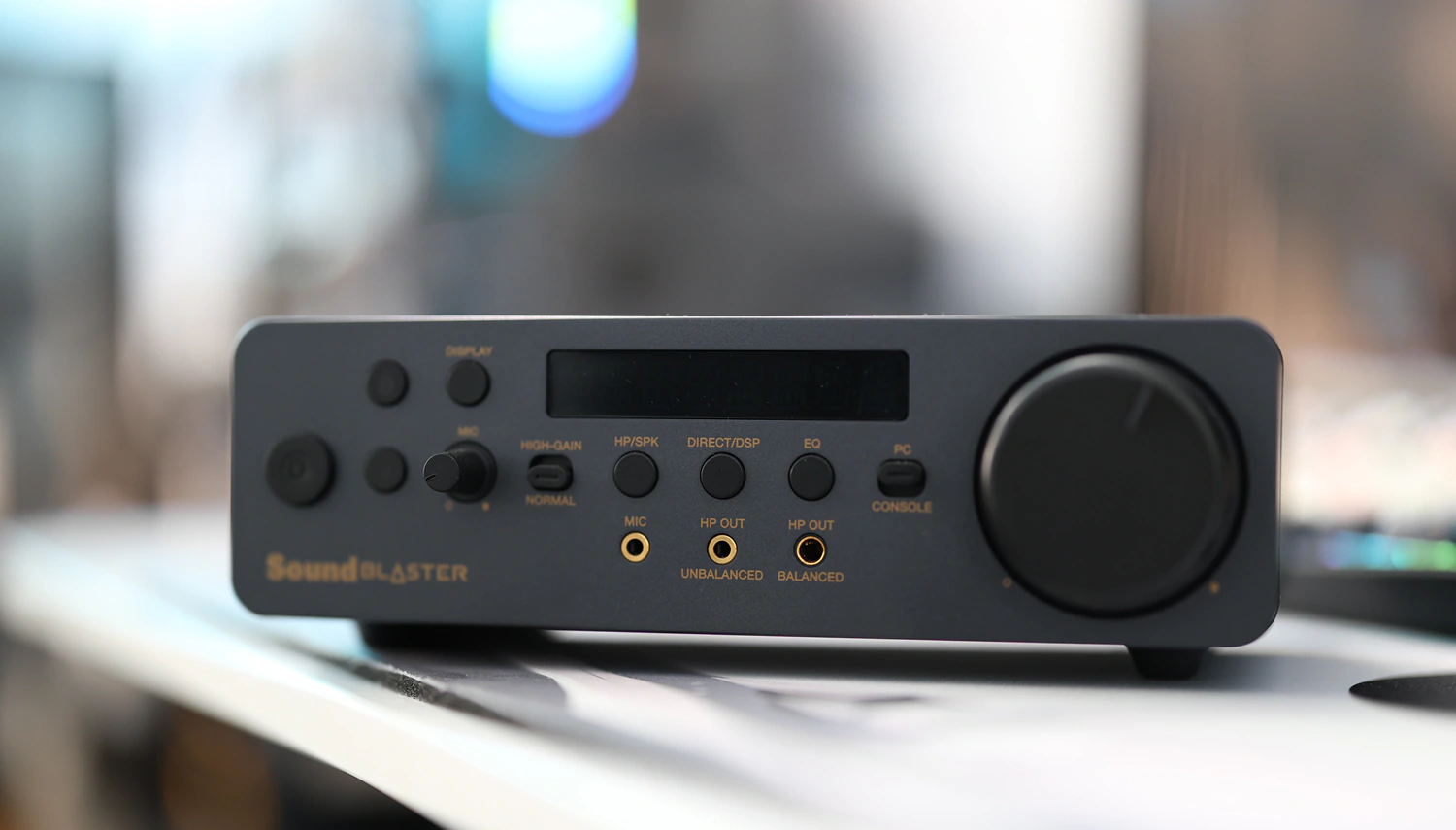
Introduction
Creative has never been featured on the front page of an audiophile reviews / magazine website before as they typically focused on features that would be of interest to gamers, and PC builders, but they are a popular company with this crowd, usually praised for the excellent price / performance ratio they offer, sturdy devices, as well as excellent sonic performance, especially compared o embedded listening solutions offered by computer motherboards or laptop embedded sound cards. As an Amazon Influencer, I earn from qualifying purchases, and using the purchase links in my reviews helps me maintain this website and Youtube Channel. Creative has provided the sample for this review, in exchange for my honest opinion.
PROs – Lightweight Build, Good support for a Type-C USB Input, Optical input and output, RCA input and output, Pure balanced Headphone Amplifier, Good driving power for all Headphones, reasonably low noise for IEMs, Efficient and fairly good sounding DSP, EQ options, Strong support from Creative for their products, Good Price / Performance Ratio.
Cons – The volume wheel controls the windows volume, which can be confusing at first. There is a bit of noise for the RCA outputs, although it can be hidden away, you need to touch the buttons at the front for some of the functions, including the On/Off switch.
Product Link
You can get one here – https://amzn.to/49OIl5r
Build Quality/Aesthetics
Creative as a company knows how to make the internals of the device stand out in the technical specs, but X5 is a very simple and spartan looking DAC, having a design that would mainly appeal to a music lover or audiophile who’s coming from the PC gaming hobby, rather than audiophiles who like to flaunt large tube amplifiers or sleek metallic DACs. This is because Sound Blaster X5 comes with a plastic finish, in a plastic case, and it is a lightweight DAC / AMP, being so light that it almost feels empty and hollow inside. On the happy side, the circuit is made in such a way that it doesn’t grow hot during usage, so a metallic case would only have added to the bulk without offering and real advantage, as this is a unit that will be sitting on your desk at all times.
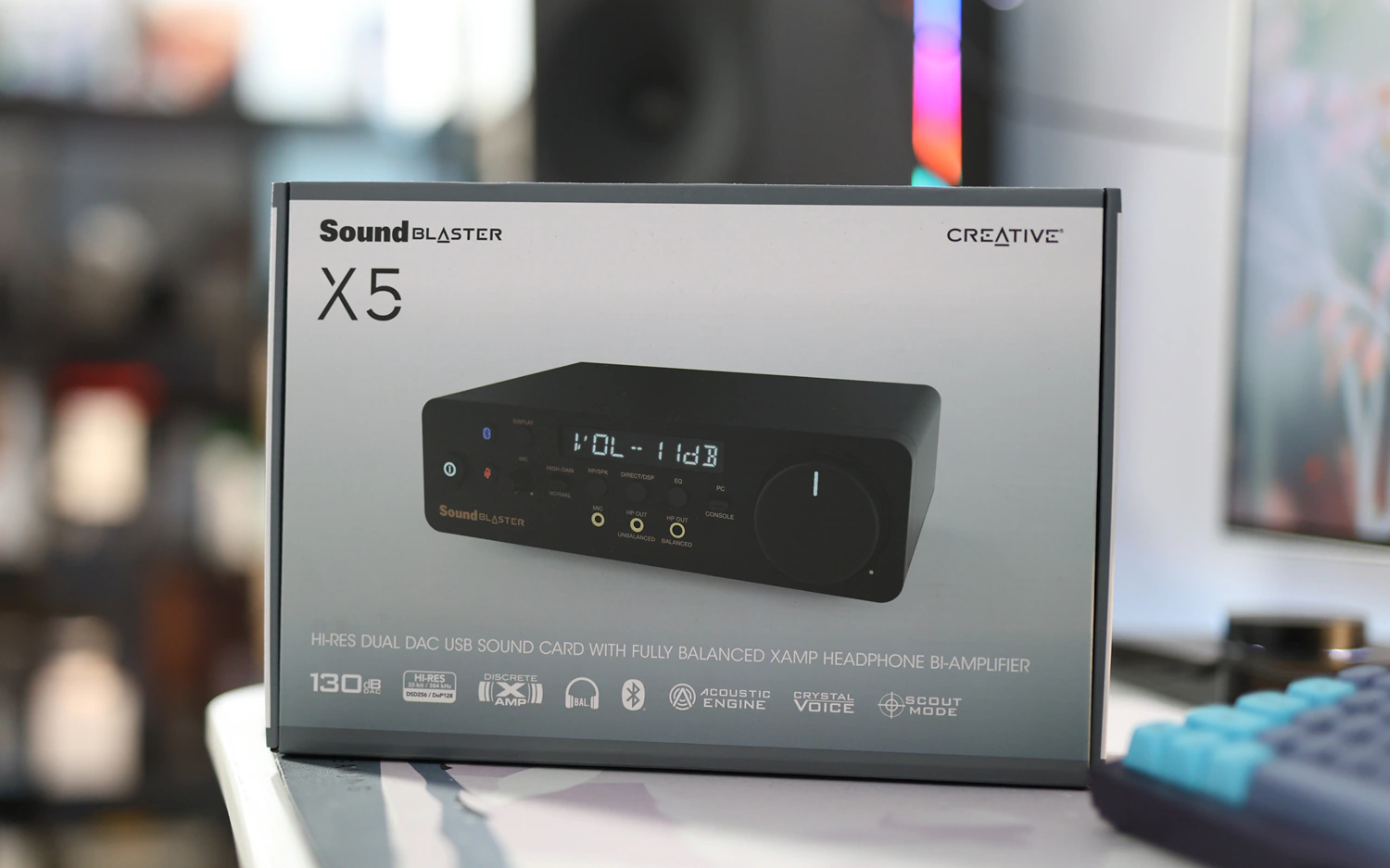
As a soundcard, we have high resolution support up to 32 bit / 384 kHz for the PCM signals, with a DNR or Dynamic Range of up to 130 dB, and this is all provided by Dual Cirrus Logic CS43198 DAcs. Thanks to having a dual DAC design, the headphone amplifier is a fully balanced Xamp Bi-Amplifier, with a customisable DSP and EQ function inherited from previous DAC/AMPs released by Creative. The THD is kept neatly low at 0.00018% (-115dB), and the playback & Recording parts of the X5 are provided by an ASIO 2.2 protocol. We even have support for DSD256 and DoP128.
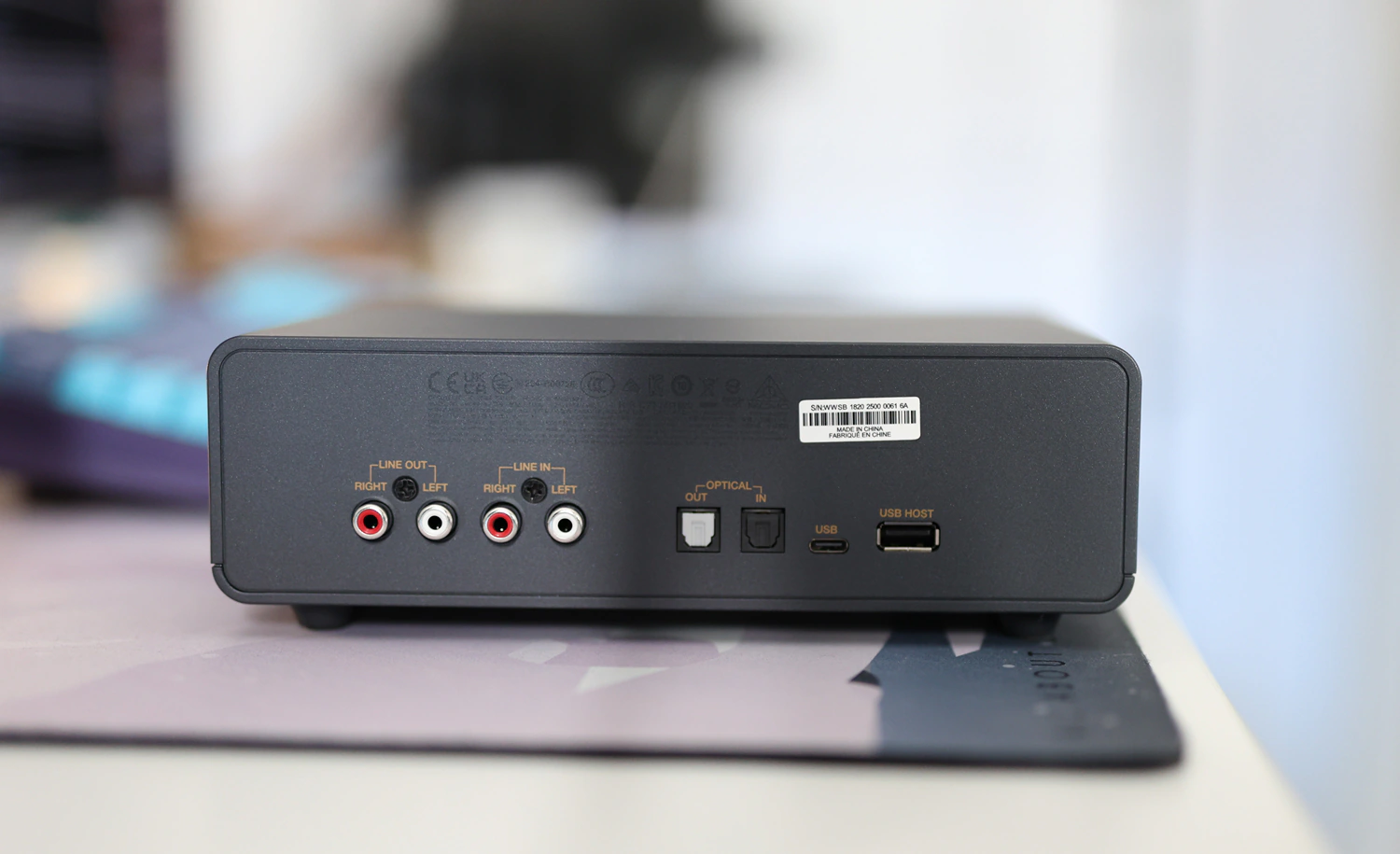
For IEMs, the output impedance is set quite low, at 1 OHM, and there’s enough driving power for headphones up to 600 OHMs, so you should be able to power a HD800S with no problems. In practice, there is a bit of noise with ultra sensitive IEMS such as Campfire Bonneville, but there is none with Spirit Audio Twin Pulse Beryllium, or with Sennheiser ie900. The general sound is quite bright and sparkly, despite the company naming the sound Silky Smooth. If you scroll all the way to the bottom, we have the output powers also explained in detail, and as we can see, the power grows with the impedance, which in theory is great, but in practice results in the less engaging sound for IEMs and better sound for full sized headphones that I mention throughout the review.
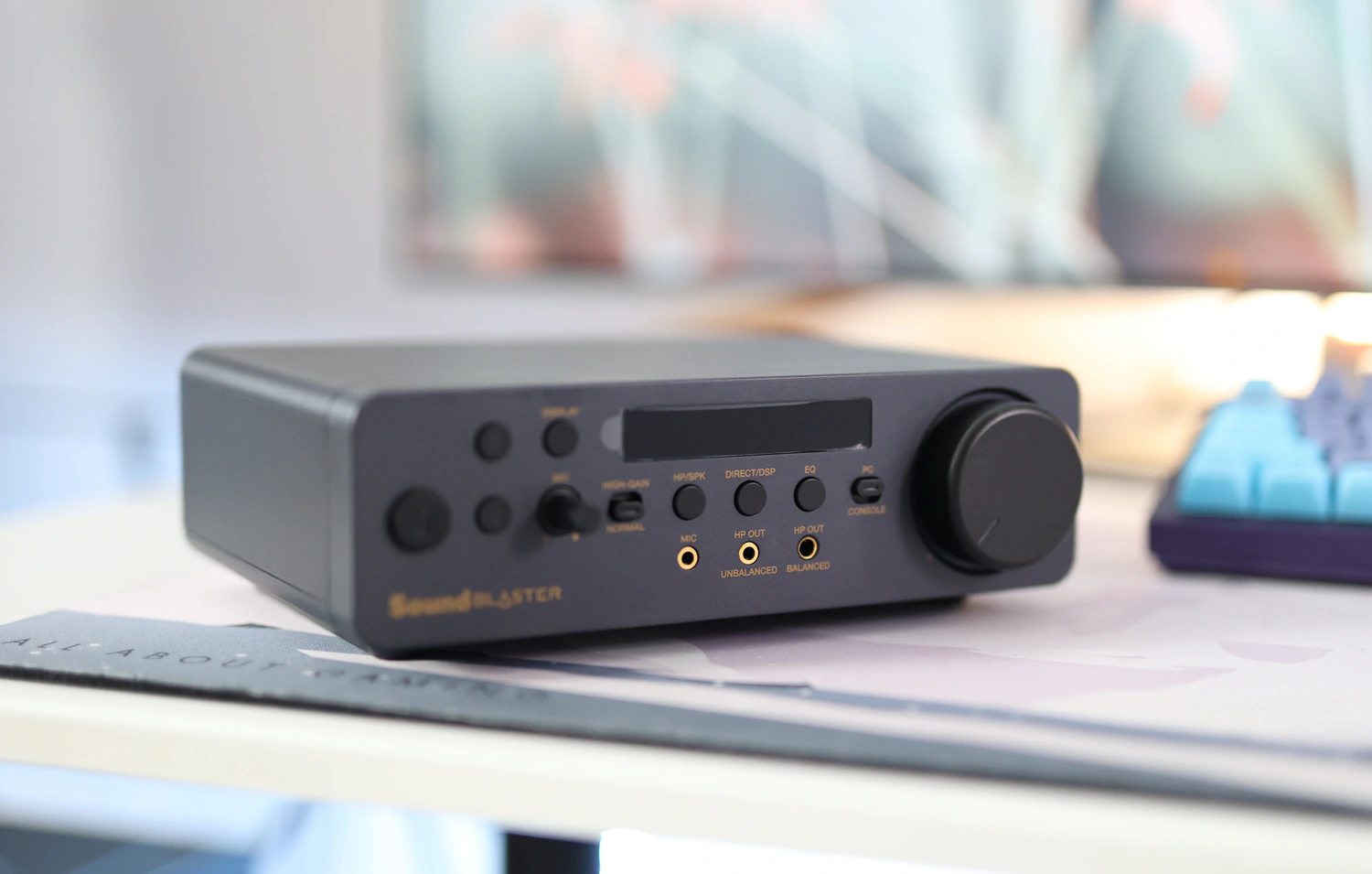
Headphone Output Power (Unbalanced) – 0.98 Vrms (60 mW) @ 16Ω, 1.47 Vrms (65 mW) @ 33Ω, 4.11 Vrms (112 mW) @ 150Ω, 4.14 Vrms (52 mW) @ 330Ω, 4.15 Vrms (29 mW) @ 600Ω.
Headphone Output Power (Balanced) – 1.18 Vrms (86 mW) @ 16Ω, 1.90 Vrms (109 mW) @ 33Ω, 5.86 Vrms (313 mW) @ 150Ω, 8.25 Vrms (206 mW) @ 330Ω, 8.28 Vrms (114 mW) @ 600Ω.
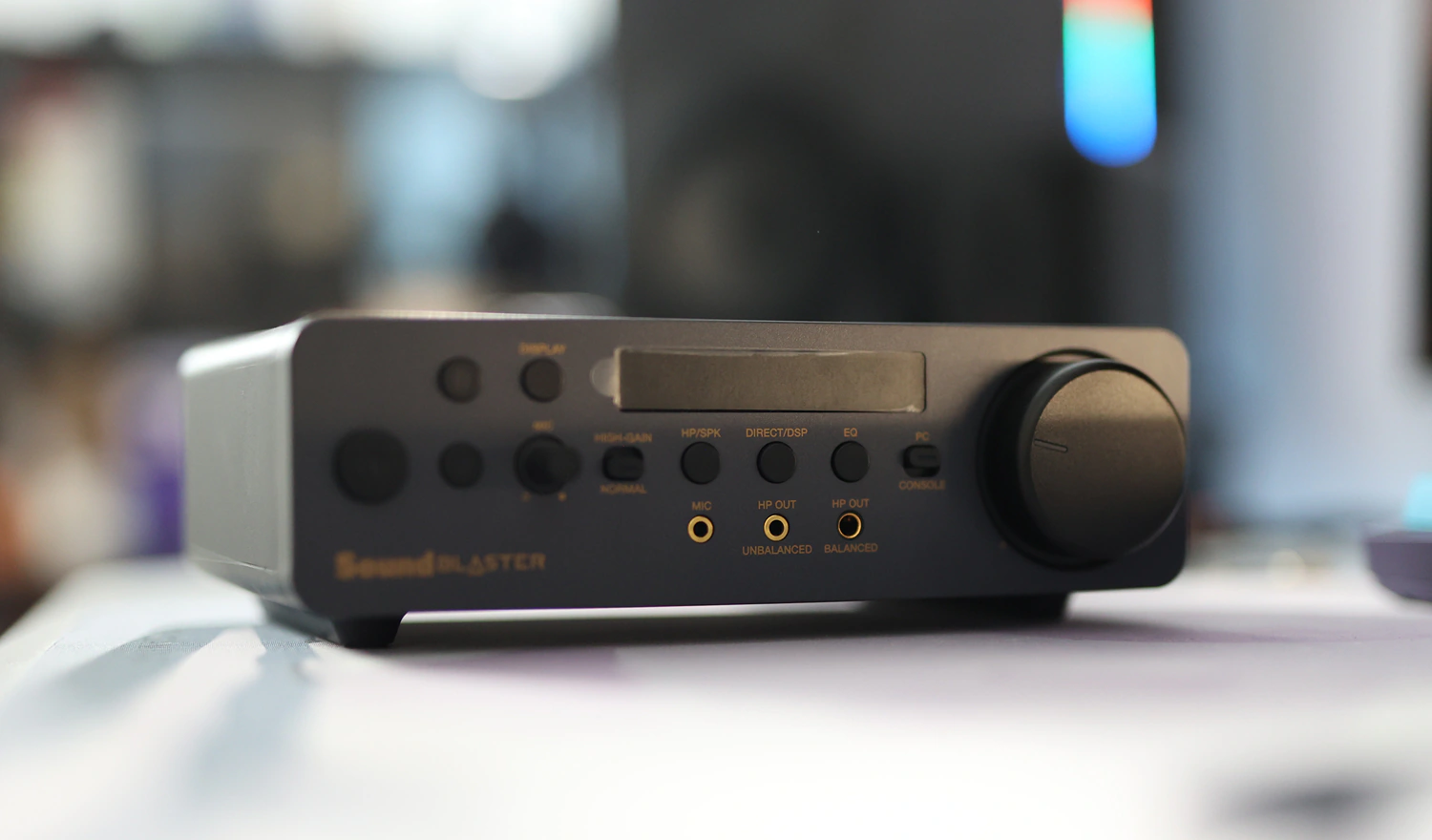
There’s a USB Type-A Host Audio port at the back, which enables X5 to be used with wireless audio transmitters such as Creative BT-W4 or Creative BT-W3, both of them allowing for high definition audio protocols such as aptX adaptive with W4 or aptX HD with W3. As far as the inputs go, we have a USB Type-C input, and a Line In in RCA format, plus an optical input, and we have an optical output, an RCA output, and two headphone ports at the front, a large 4.4mm balanced headphone output, along a smaller 3.5mm single ended headphone output.
USB DAC / Software
While for most DAC/AMPs, you don’t need any special software, Creative Sound Blaster X5 comes with the Creative App which can be found on their official website for Windows / MAC and for mobile platforms on Google Play and even Apple AppStore. You don’t really need to use the Creative app at any given moment, and you can do everything the DAC/AMP can do without installing it, but it makes engaging the special DSPs a bit easier, and allows you to place the Sound Blaster X5 somewhere behind the monitor so you don’t have to fiddle with the buttons. There’s a simple switch to turn off all DSPs, but also an EQ, Crystal Voice (which brings voices and mids forward), and a Scout Mode, which makes the sound wider, but less natural.
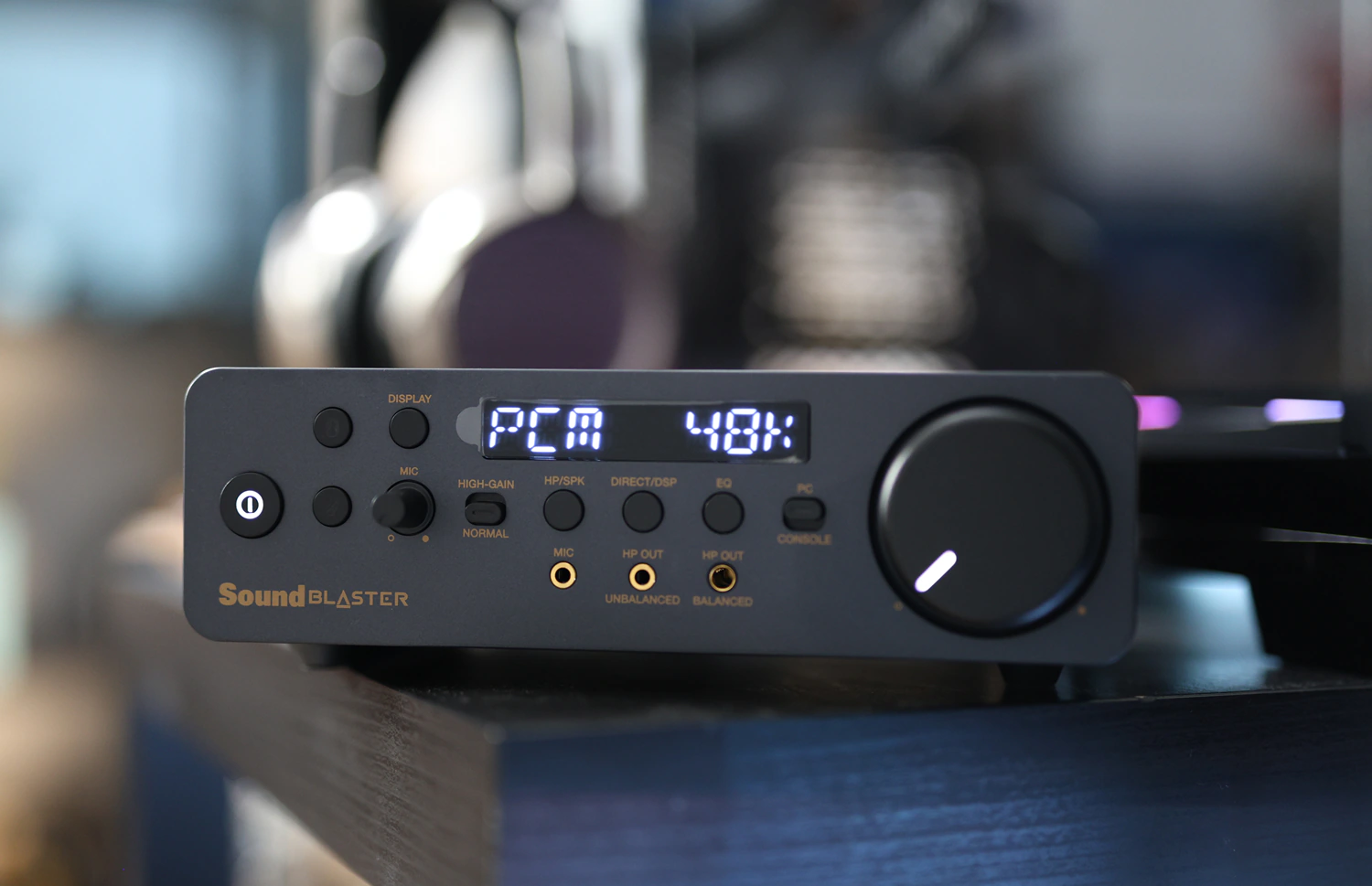
When using the X5 as a Windows DAC, there is no noticeable USB DAC delay, regardless of what the input rate of the files is, and there is no problem with the DSPs engaged either, so you can use X5 to the fullest of its ability without fearing for delay. Even the Optical output and input are handled in real time, and I cannot detect any delays, although I am fairly sure there is ADC and DAC conversion involved if you’re using the Optical Input or Output.
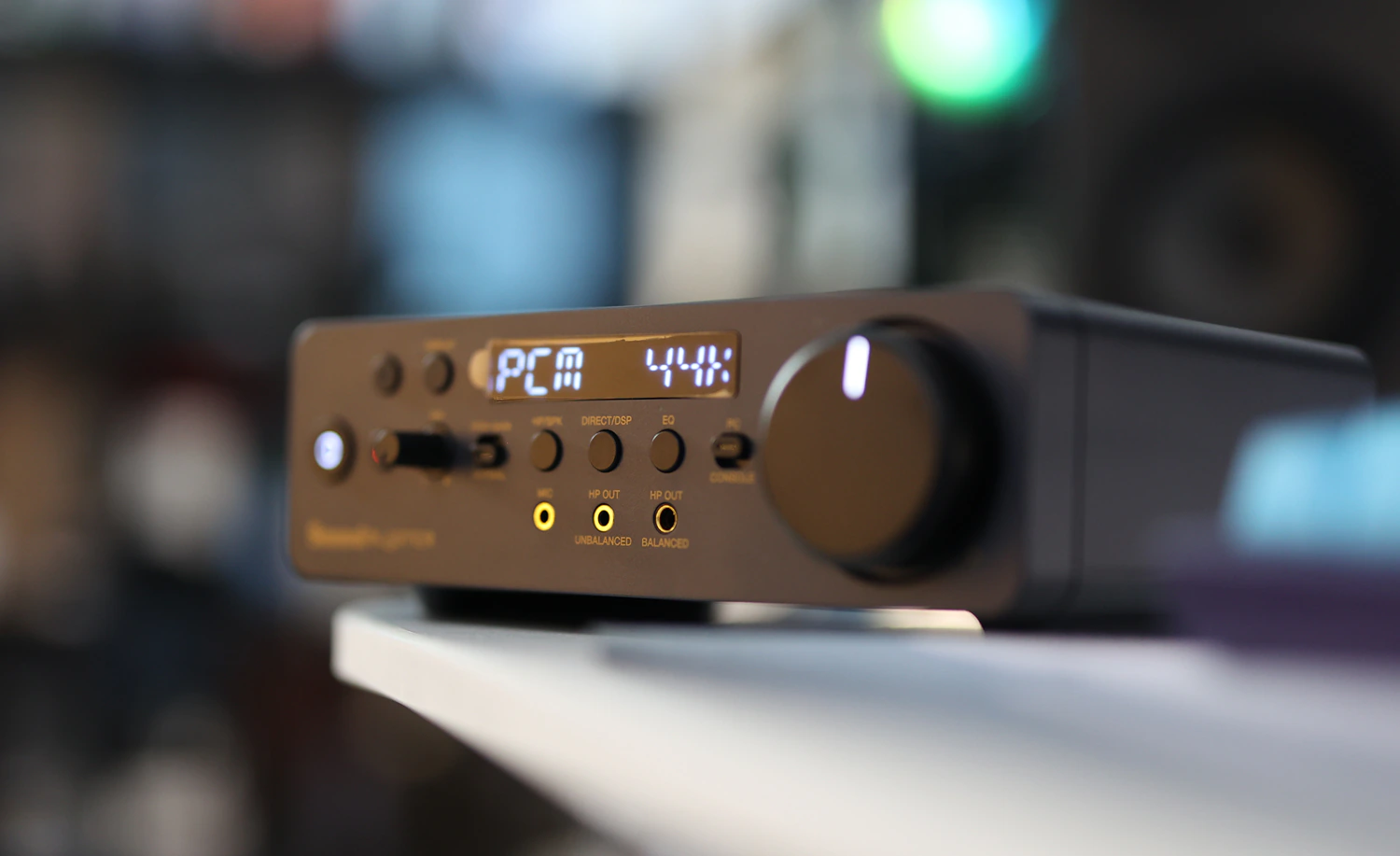
The volume on the X5 seems to control the volume of my windows PC, so it is sometimes complicated to set the volume using the wheel on X5, but happily I have a metallic volume wheel embedded in my keyboard, the KeyChron Q6, and it allows me to set the volume from there. While I can’t emphasize that this will be a feature every gamer or audiophile needs, I always find it nice having a volume wheel directly in the keyboard, though most DAC/AMPs I review don’t make much use of it.
Sound Quality
Pairings – Given the design, I mainly have used the Creative Sound Blaster X5 as a soundcard driving headphones. The RCA outputs at the back carry a bit of background noise, and are generally intended for self powered speakers, but for headphones and IEMs, the noisie is well controlled. I would stick with IEMs above 16 OHMs of impedance, and headphones up to 600 OHMs, so my test list includes Audeze LCD-5, HIFIMAN HE1000SE, iBasso 3T-154, and iBasso SR3, Campfire Audio Bonneville, Spirit Torino Twin Pulse Beryllium, HIDIZS MS3, FIR Audio e12 electron, HIFIMAN Audivina, and Sennheiser HD 660S2. I noticed a much higher driving power than expected, although with IEMs, there is a bit of background noise, and the amplifier inside seems to be better suited for hard to drive, both high impedance and low SPL headphones, rather than easy to drive IEMs. I think Creative X5 answers the best to those gamers and enthusiasts who want to power high-end headphones, but don’t want to invest in a DAC/AMP, as it offers a fulfilling experience with plenty of dynamics and impact, but with the price tag and convenience of a traditional gaming sound card.
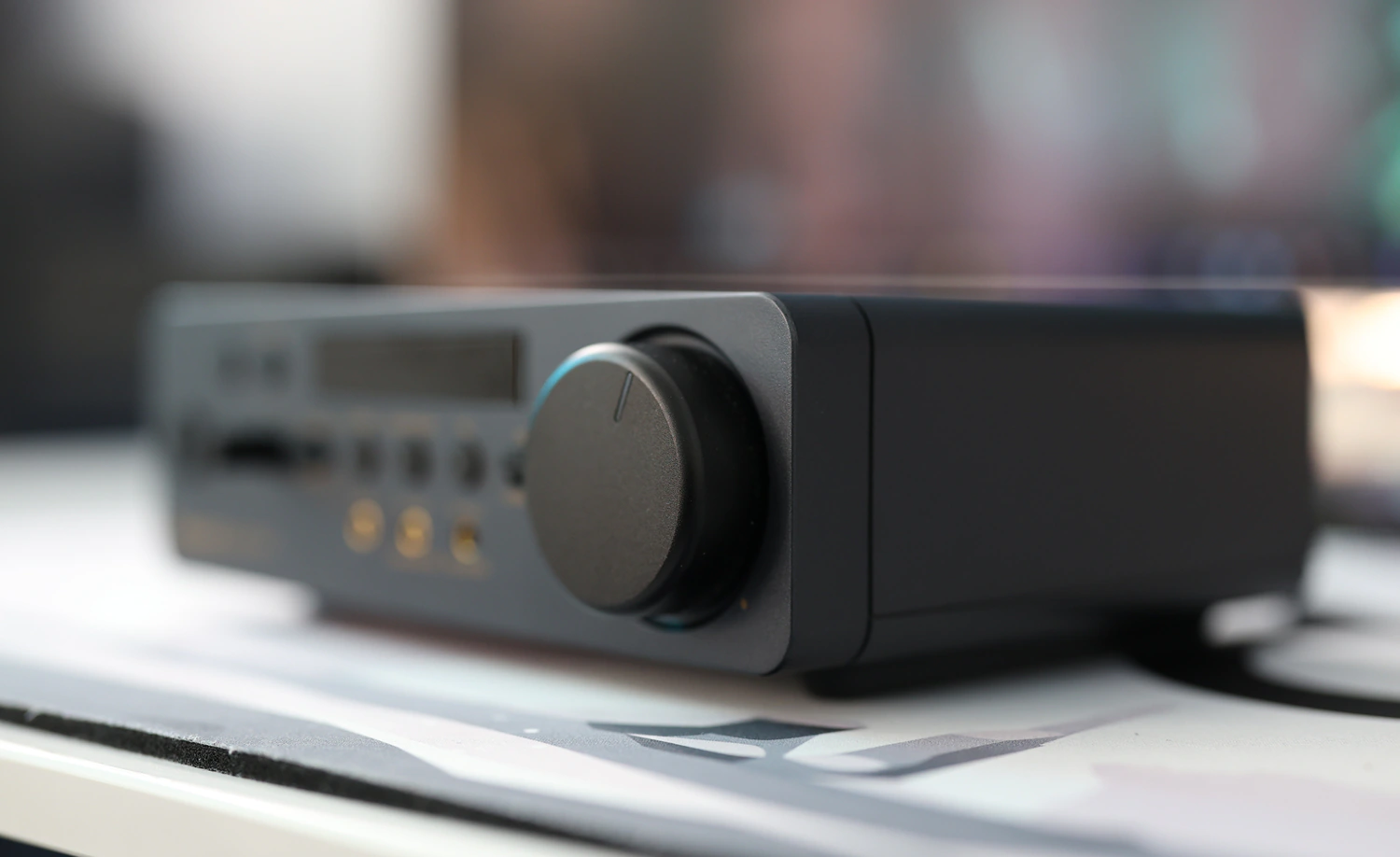
Overall Signature – It is unexpected for the X5 to sound like this, but it is a brilliant sounding DAC/AMP with an emotional presentation, a wide and deep soundstage, excellent instrument separation and outstanding resolution. The most surprising part is how controlled the sound is, and considering that the power delivery isn’t that great, X5 provides a clean, distortion-free bass which is always deep and pleasing. The dynamic range is also excellent, with the sound getting a full makeover compared to most embedded sound cards, or other PC sound cards, in the price range.
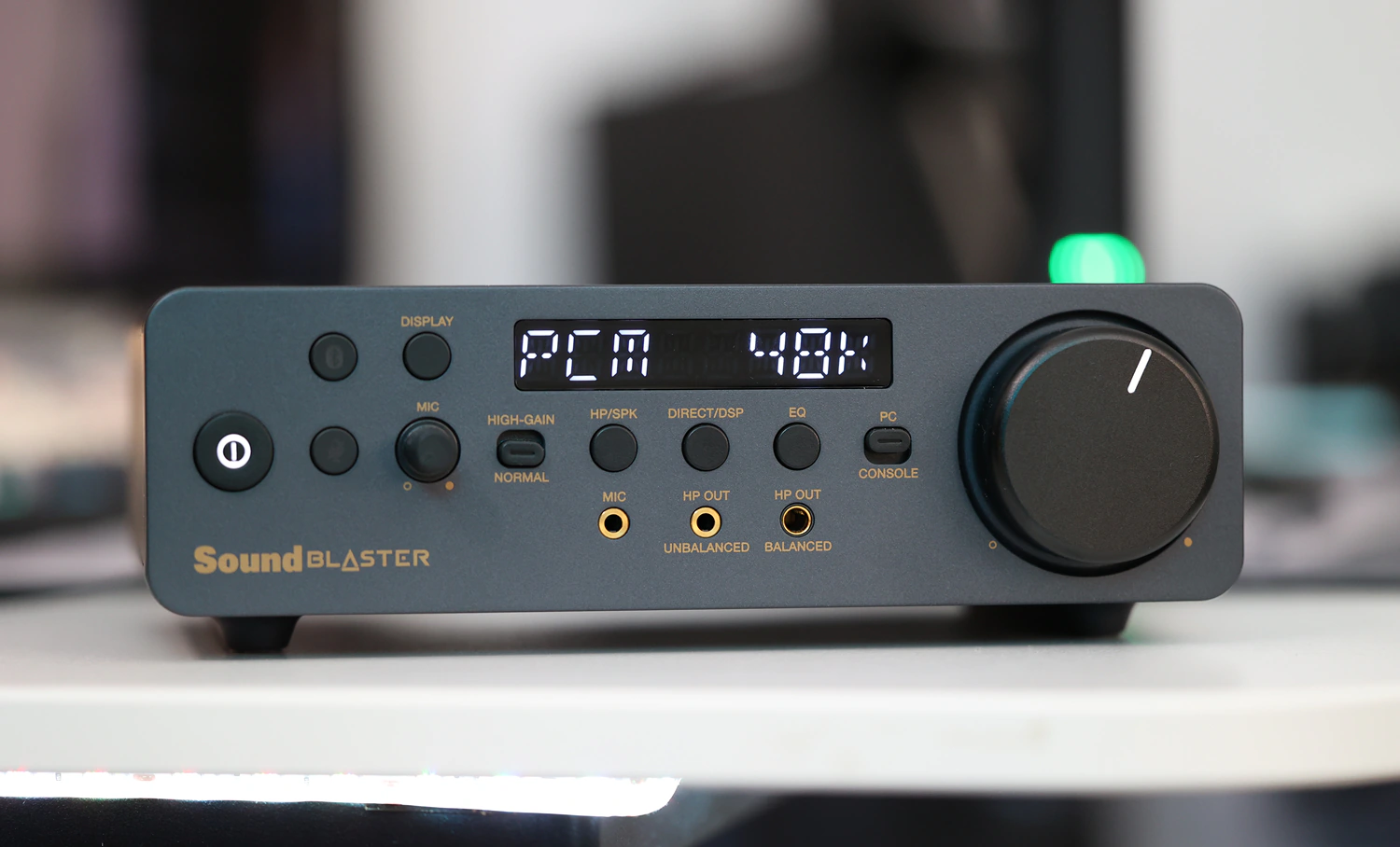
Bass – Creative can push some serious bass into hard to drive headphones, such as HIFIMAN Arya Organic or Sennheiser HD660 S2, creating an impactful and deep presentation, although the bass is generally kept at a neutral level for headphones where you don’t really have to push the volume. The bass quantity and character seems to be tightly connected to how much power is needed to drive a headphone, and the louder you go, the more bass will be present in your mix. The bass guitars are also brought in second place, right behind the lead voices and lead guitars / lead instrument in most songs, filling in the entire soundscape with substance, and presence, but keeping the tonality fairly neutral. Basically, the bass will not add veil or much warmth to the mix.
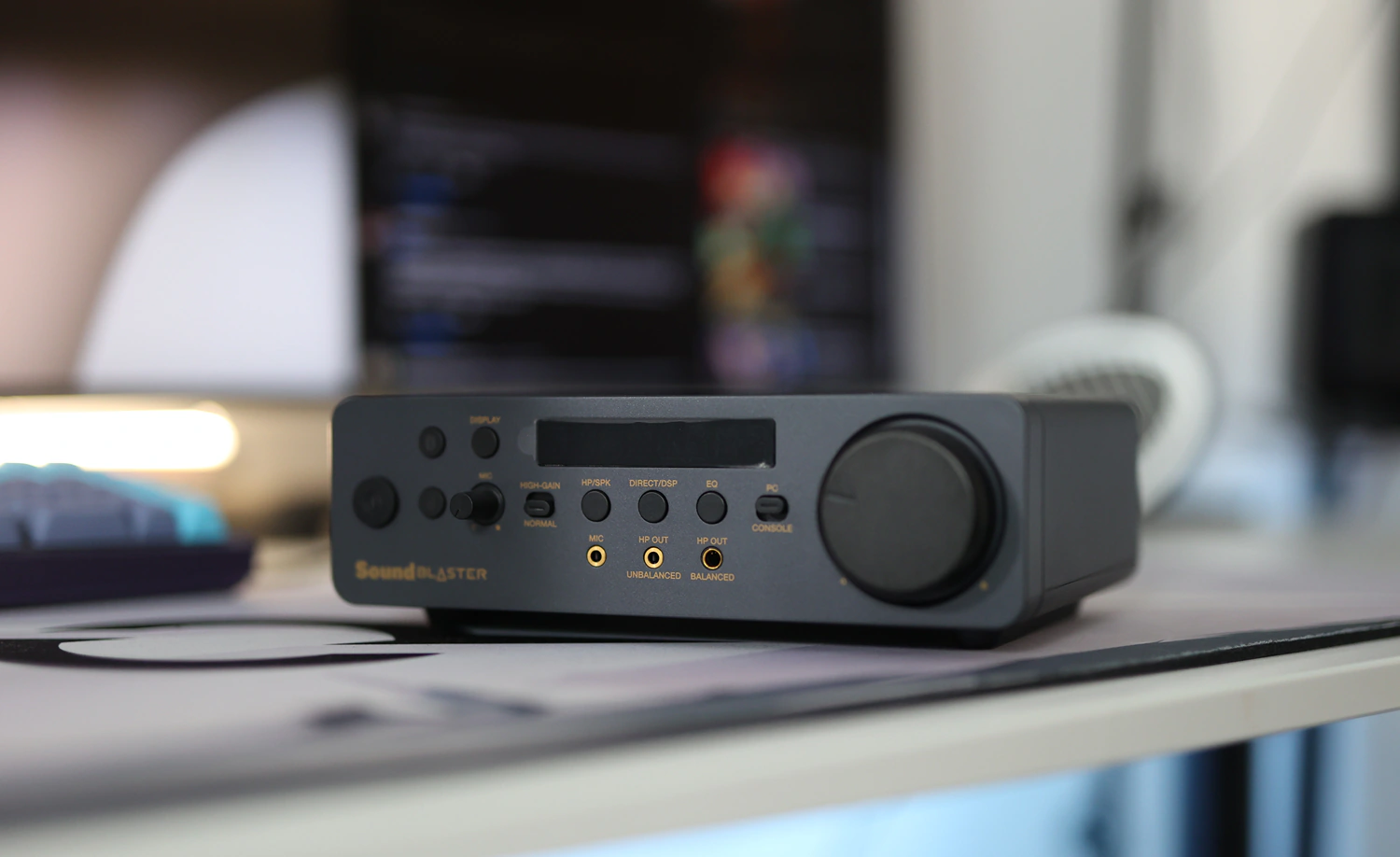
Midrange – The midrange of the Sound Blaster X5 is where I found it to be most surprising, it has a really clean, wide and holographic stage, with a superb level of resolution and detail, pushing dynamics and separation previously thought to be impossible for a mere soundcard, especially in this price point. Creatie simply made an ultra engaging sounding DAC/AMP that deserves to shine and to be heard, with beautiful voicing for female voices, and a bold, strong tonality for male voices. Everything simply makes sense, combines beautifully together and X5 sounds crisp and detailed. Vivid and above everything engaging, X5 is basically the most hyped up sounding DAC/AMP in the price range, and this is without any special effects engaged, as all of its special effects tend to sound a bit unnatural in the midrnage.
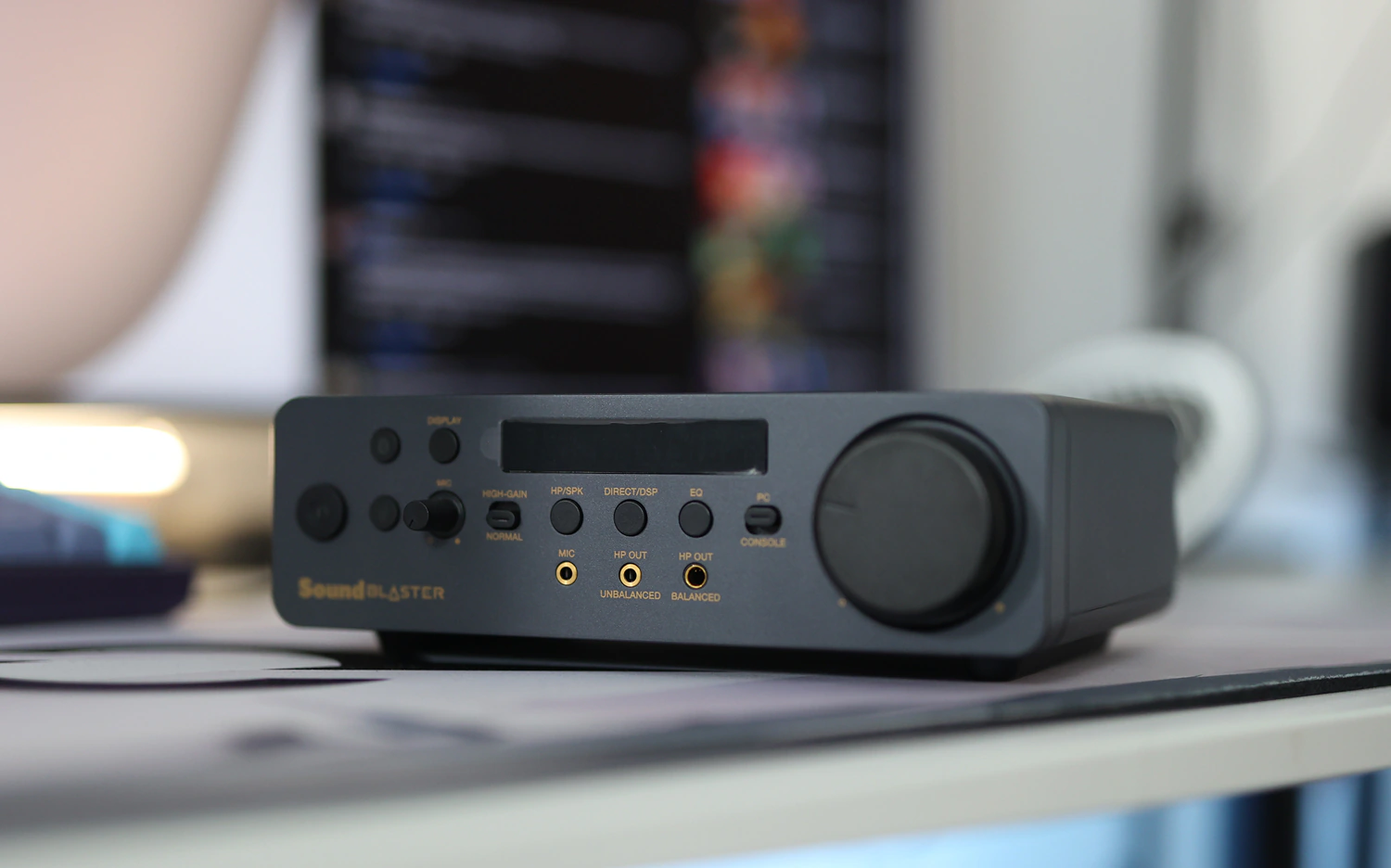
Dynamics / PRaT / Textures – The texture is true to the recording, and the dynamic range is quite excellent. This is what surprised me the most with the Creative Sound Blaster X5, the dynamic range is one of the best I’ve heard in a DAC/AMP in this price range. This being said, in PRaT it stays honest to the source and impulse response is quick, with little pre-ringing or post impulse ringing, so you can expect each musical note to be edgy, and sharp. Synths can sound both sharp and smooth, depending on the mix and master. I feel that X5 is an underrated beginner mixing / mastering sound card, thanks to how much it respects the source material, without adding or removing anything from the signal. With a dynamic range that suprasses most DAC/AMPs in the price range, especially with hard to drive headphones such as HE1000SE, you will hear everything there is in your music, and with a bit of extra emotion and impact.
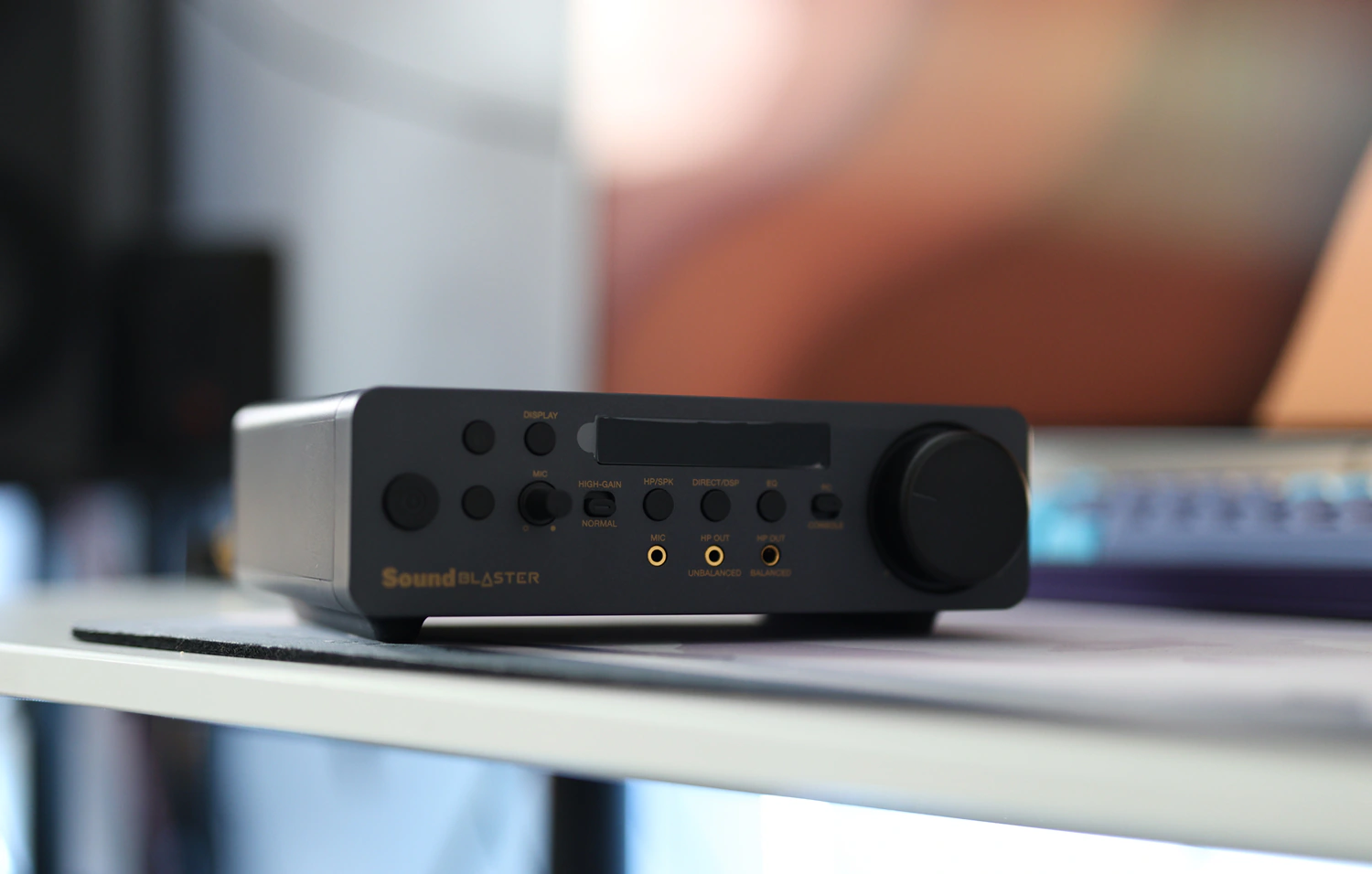
Soundstage – Creative has always been praised for their wide and holographic soundstage, found across all their devices, and I can confirm that an old-school DAC/AMP I had from them back in 2010 delivered a really wide and holographic sound, but the new X5 also delivers that quite nicely, and if you feel the soundstage isn’t wide and holographic enough, there is DSP processing to widen it, at the cost of midrange warmth and naturalness. You can expect music to come at you from across vast landscapes, both in width and in depth, but given the emphasis placed on the treble and lower amount of bass, the sound will be wider than it is deep.
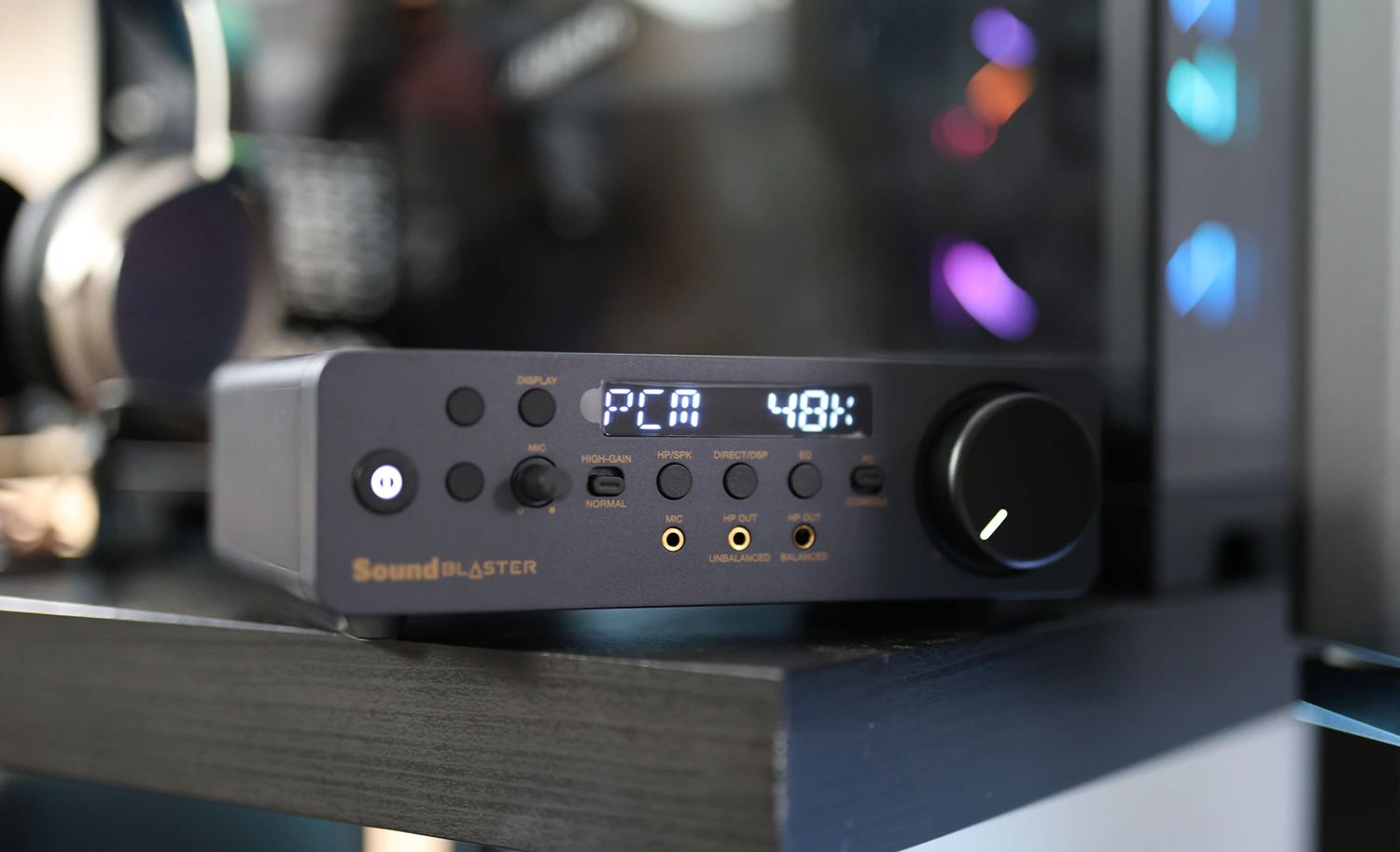
Volume Control – Sound Blaster X5 tends to sound a bit better at medium and higher volumes, and although it does have good detail and resolution right from the quietest sonic levels, it becomes more dynamic and more engaging at medium, and higher volumes. As the background noise level with IEMs is on the slightly noisier side, reaching medium volumes also drowns out hissing and other background noise elements, adding to it sounding better medium and loud, as this is present with headphones too, and if we take a look at the power ratings, the power increases slightly with impedance as well, so it is clearly designed to do its best when it puts more power into the sound.
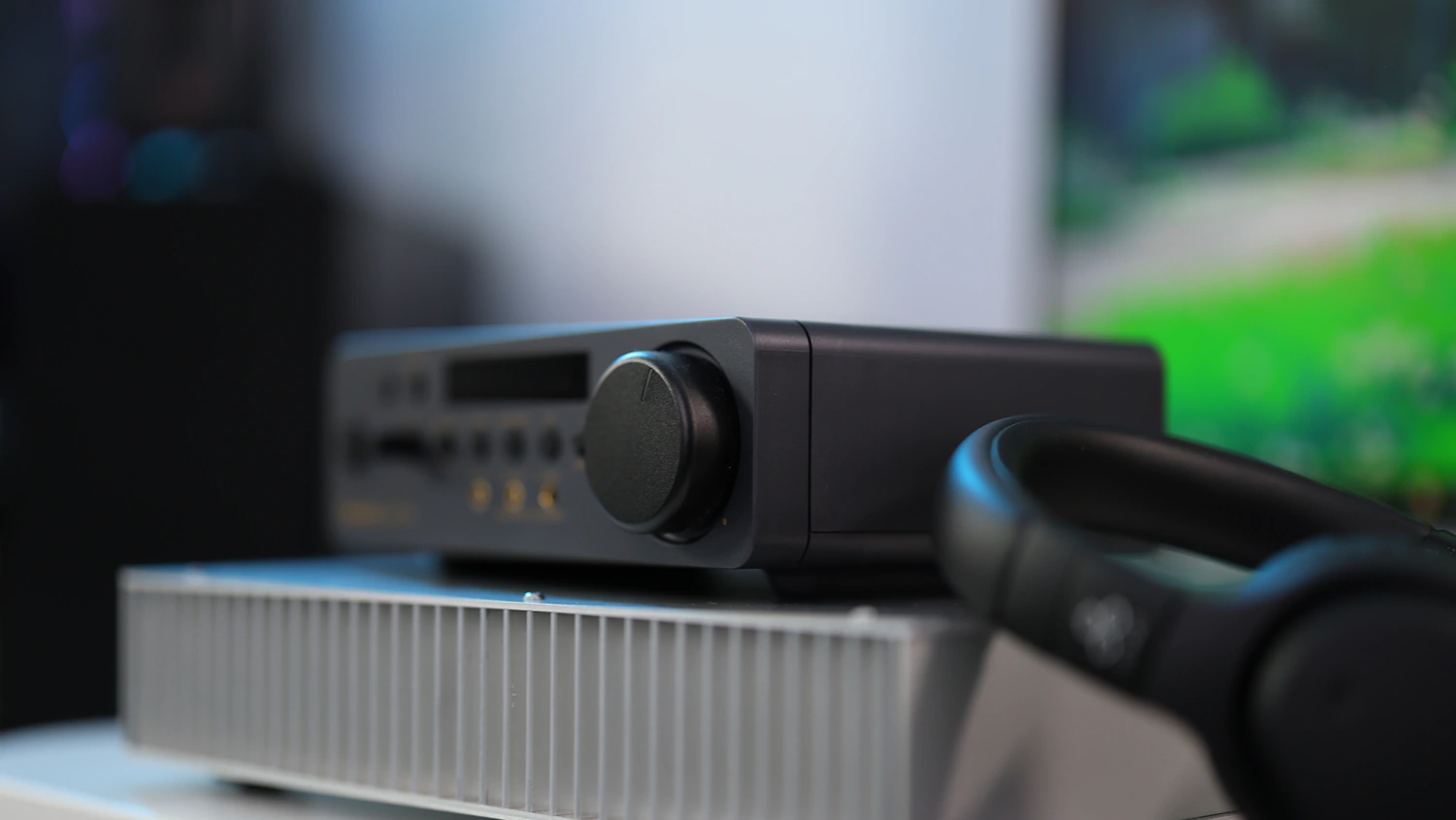
Treble – Creative has always been one of the companies with a bright tuning for their devices, and the new Sound Blaster X5 makes no exception, as we’re hearing a brilliant top-end extension, with most headphones easily reaching 20 kHz, and with a lot of strength in the cymbal crashes as well as sparkles and special effects in music. The airier treble adds to the engagement factor of the X5, it makes it sound really open and clean, and the treble is generally natural in texture and tonality, so smoother instruments and recordings will sound smoother, while harsher ones will sound harsher. I feel this is a desirable effect for a general-usage sound card, as it doesn’t really influence the texture and presentation of the sound, allowing sounds to come as they are in the recording.
Comparisons
Creative Sound Blaster X5 vs Aune X1s GT (299 USD vs 349 USD)
Build – Aune x1s GT has been one of my favorite edgy-looking DAC/AMPs that I have actually been using for gaming and recommending for gamers, thanks to its forward design, and neat build quality. It has a balanced headphone output, both have an RCA output, but X1S GT has one that bypasses the internal volume control and acts as a DAC output, while X5 has an RCA output and an RCA input. We have optical input and USB input for both, but X5 has optical output too, while X1S GT has bonus Coaxial input, and Bluetooth input, while Sound Blaster X5 has the bonus of having DSP. Both devices have good driving power, but X1s GT has a slightly lower noise with IEMS, while X5 has a slightly better driving power and control with hard to drive headphones both low SPL and high Z headphones.
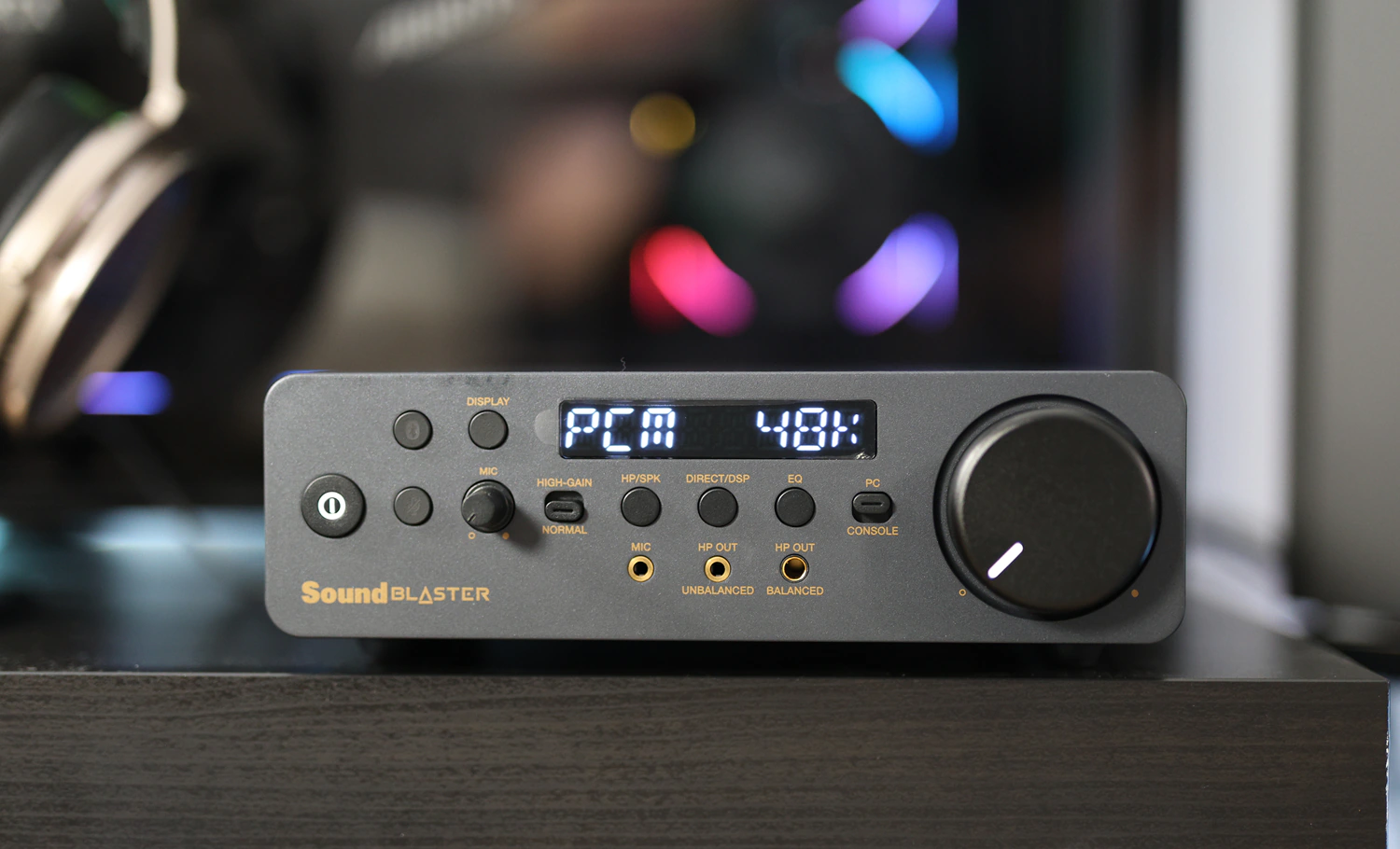
Sound – Aune went for a warm and smooth sound with the X1S GT, it has a strong punch, but doesn’t force a strong treble, allowing listeners to relax and having a more refined treble and a softer texture. Sound Blaster X5 has hard textures, etched special effects and a wide soundstage, plus strong contrast and instrument separation, sounding more neutral and cleaner, while X1S GT sounds more cohesive and everything just combines more together. If you have mainly bright and sharp sounding headphones, I would recommend getting the Aune X1S GT, while if you mainly use smoother and warmer sounding headphones, Sound Blaster X5 can give them an extra treble sparkle, a tighter bass, and a more controlled sound.
Creative Sound Blaster X5 vs iFi audio Go Bar (299 USD vs 329 USD)
Build – iFi Go Bar has a good reputation with music lovers for the tuning and sound signature it has, but it is mainly a small DAC/AMP with a limited driving power, intended to be used with IEMs and portable headphones, while Sound Blaster X5 does a better job with hard to drive headphones, where it can show how well a desktop unit handles a dual dac – dual amp design. There is just one Type-C USB input with the go Bar, and two headphone outputs, 4.4mm Balanced and 3.5mm Single Ended, while X5 has RCA outputs, Mic inputs, Optical inputs and outputs, and RCA inputs too. Go bar can grow quite hot during usage, while this does not happen with X5.
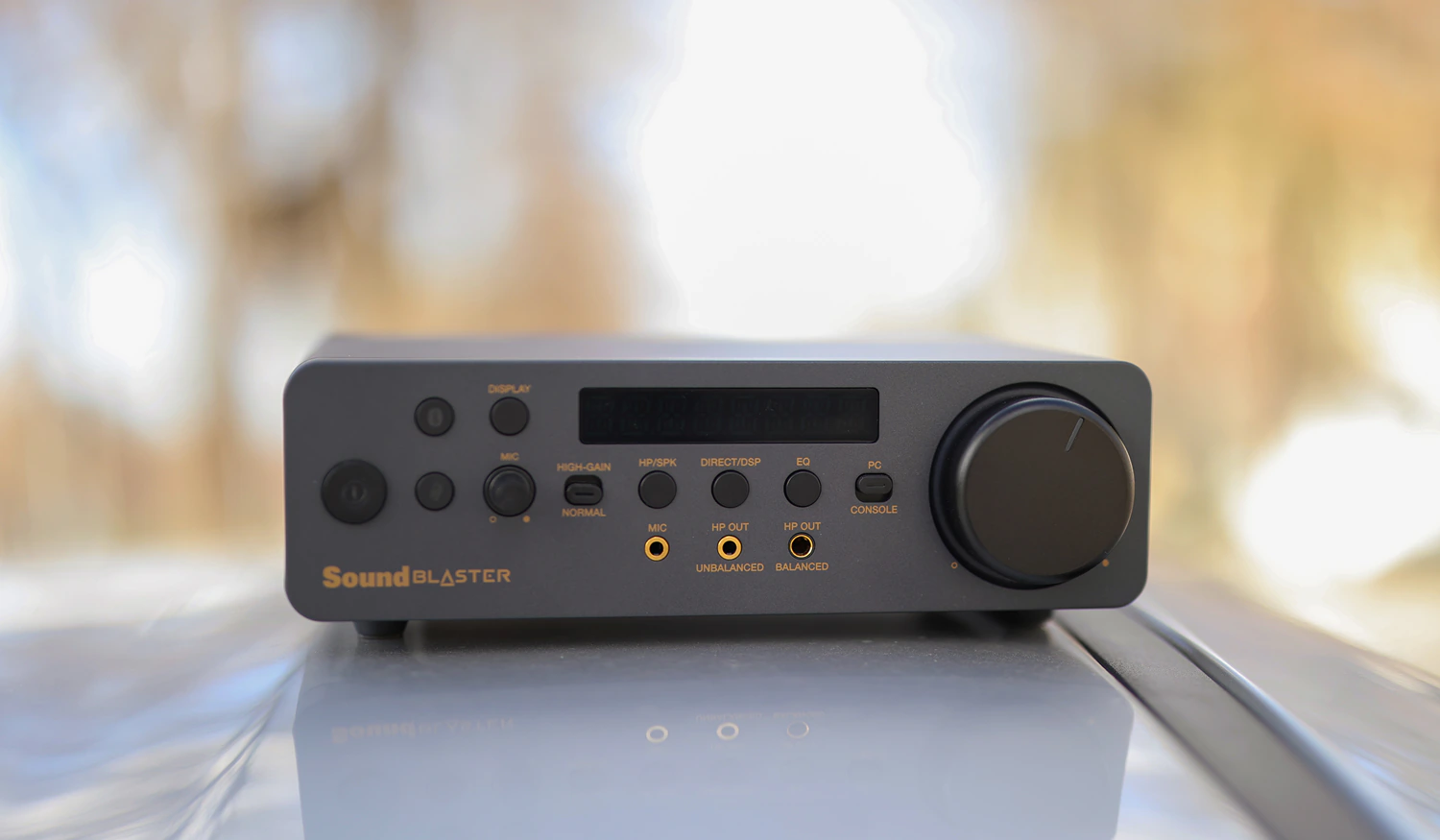
Sound – Sonically, they are both rather engaging and punchy sounding DAC/AMPs, but the biggest difference is in the bass, where Go Bar has a higher amount of bass, which is a bit slower and sloppier, while X5 sounds tighter and more neutral, having a lower amount of bass, and a higher amount of treble. Generally speaking, both will make a warm and smooth sounding headphone both brighter and tighter, but Go Bar will give all music a bit of extra low-end presence, while X5 will make the soundstage wider and more holographic. If you are sitting at a computer most of the time, Sound Blaster X5 is a better purchase, while if you’re on the go and need something small and portable, and if you’re mainly using IEMs, iFi Go Bar is a better purchase.
Creative Sound Blaster X5 vs Shanling H5 (299 USD vs 369 USD)
Build – Shanling H5 is basically two things, a portable DAC / AMP that works for desktop, with a full RCA output, but also a portable shuffle mini player which can play the files from a microSD card inserted into it. Both devices use a Type-C usb input, but H5 has its own internal battery, plus a separate charging port, if you have a higher quality source and want to isolate the noise from the computer. Both X5 and H5 have a balanced headphone output, and a good driving power for full sized headphones, but H5 handles IEMS better, with lower noise, better dynamics and more punch, while X5 handles larger headphones better, having a higher dynamic range, and a punchier, more vivid sound.
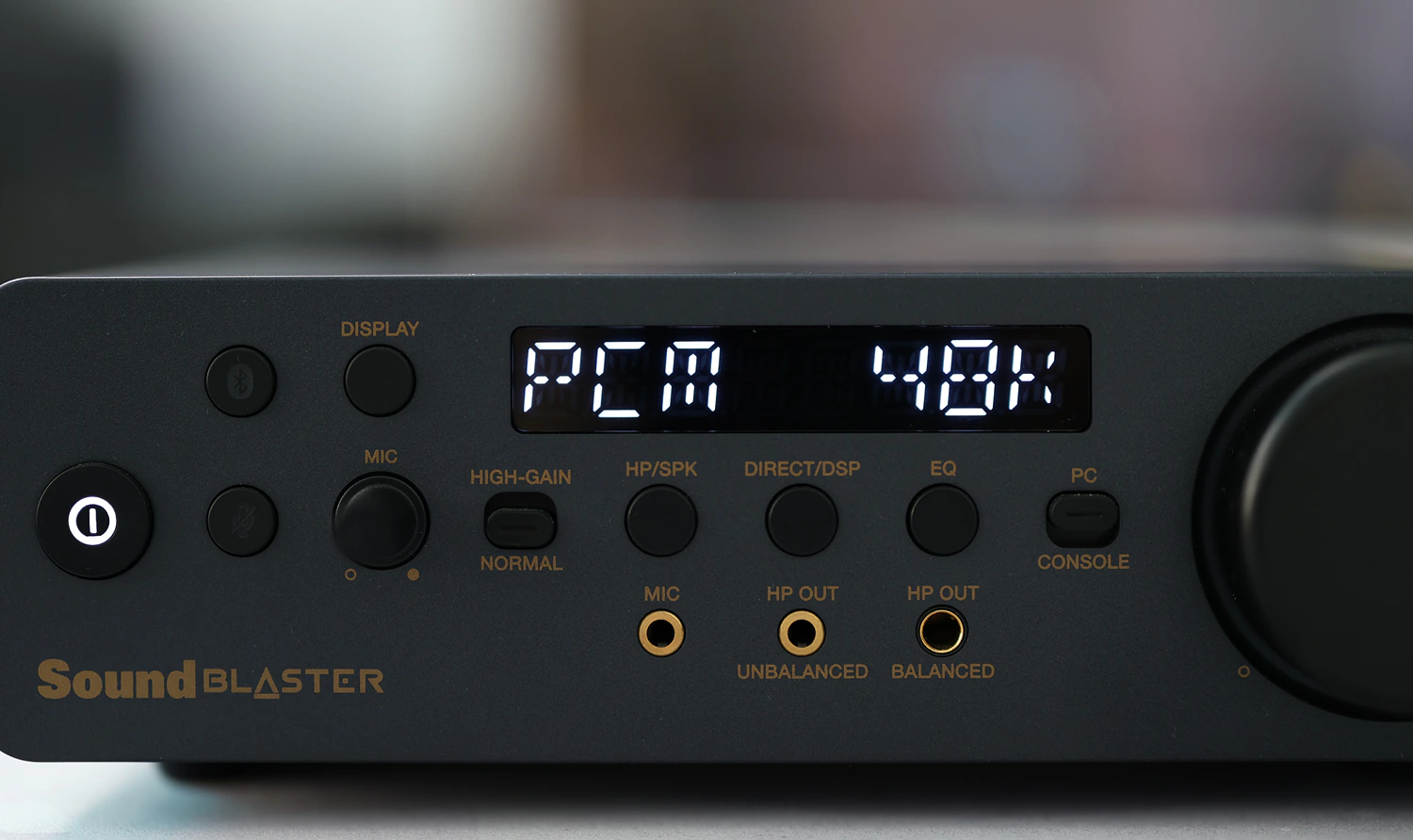
Sound – Sonically, H5 in general sounds smooth, with a soft roll off effect in the treble, and a warm, bassy bottom end. By contrast, Sound Blaster X5 always sounds rather neutral and bright, having an emphasis on the treble, resolution and clarity, with a rather flat bass, although this also means a lower distortion in the bass most of the time. I would grab a Shanling H5 if I mainly had bright and sharp sounding headphones and IEMs, to tone them down and warm up their sound, and I would grab a Creative Sound Blaster X5 to brighten up darker, duller or smoother sounding headphones, and to increase the air and treble presence they have, or to tighten up the bass and lower the distortion for headphones which are generally hard to control by most sources.
Value and Conclusion
You simply don’t follow an audiophile reviews website expecting me to say that a sound card made by Creative is a good value, but today, despite all odds, they managed to deliver a product which is compelling in both shape and sound, features and price / performance ratio, offering what I would consider to be excellence in sonics. Not only this, but Creative has exceptional customer support, and the Sound Blaster series has seen more songs being played through them than any other line of DAC/AMPs in the whole world, considering the market share they have for PC computers, so it is nice to see that you can now have both a good gaming PC, and good audio to go with it, plus enough power to drive most headphones out there adequately.
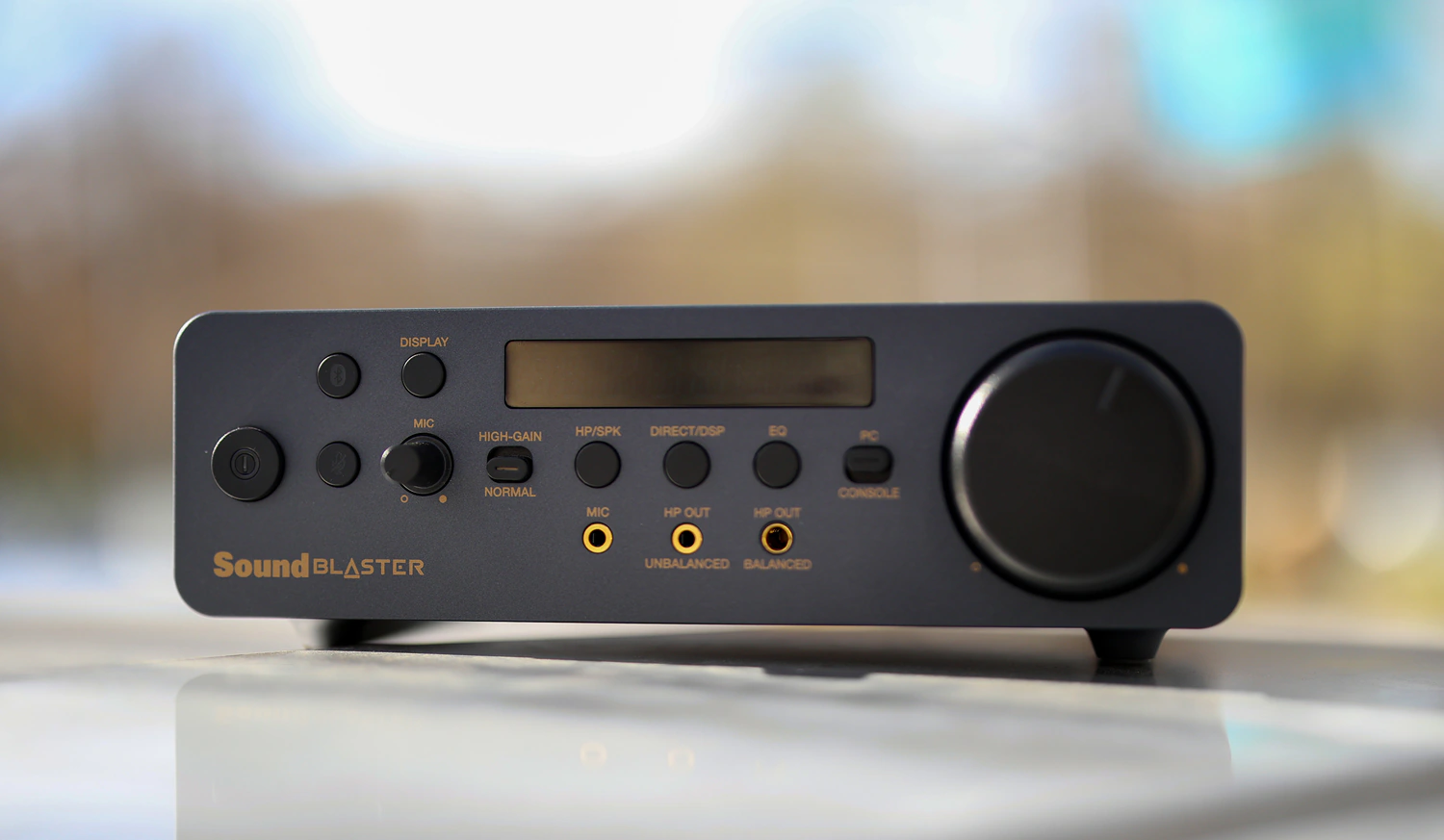
At the end of the day, if you’re looking for a DAC / AMP / Sound Card that delivers an exceptional sonic performance, outstanding resolution, and a beautiful voicing, plus a wide and holographic soundstage, and a neutral bass, with quick speed and strong impact, Creative Sound Blaster X5 is an excellent choice and a fully recommended purchase.
Product Link
You can get one here – https://amzn.to/49OIl5r
--- Please remember to stay safe, and always have fun while listening to music!---
- If you have a dime to spare, please donate, and help us! It would make the day brighter for me and my wife-
Full Playlist used for this review
We listened to more songs than those named in this playlist, but those are excellent for identifying a sonic signature. I recommend trying most of the songs from this playlist, especially if you’re searching for new music! The playlists are different for Spotify, Tidal and Youtube, and based on the songs I enjoy and are available on each!
https://www.youtube.com/playlist?list=PL_cjBXGmwSHSdGcwuc_bKbBDGHL4QvYBu
https://open.spotify.com/playlist/5J3oloz8Riy9LxEGenOjQ0?si=979ba4f082414be7
https://tidal.com/browse/playlist/330fd544-8e5b-4839-bd35-676b2edbb3d5
--- Contact Us ---





